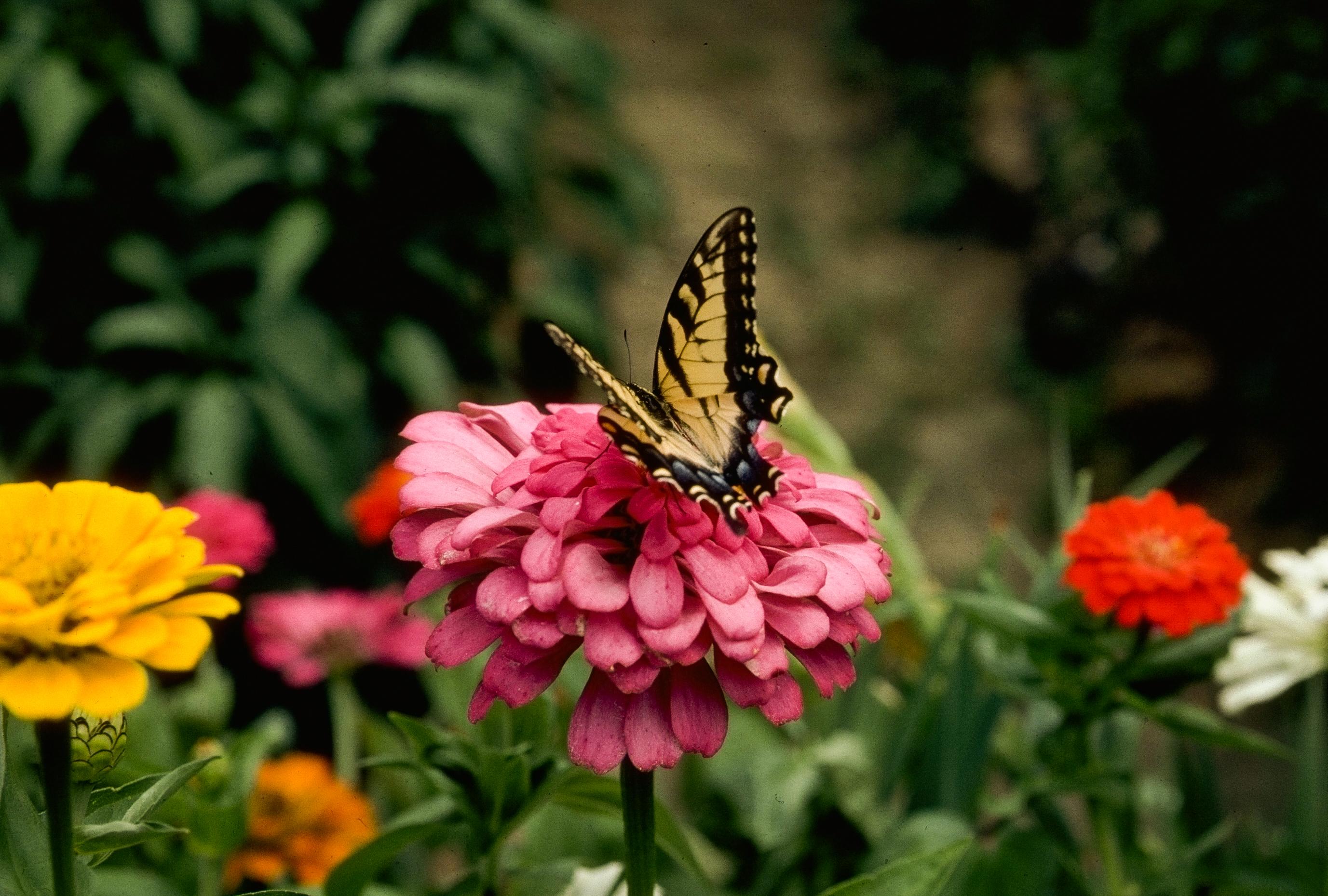Soil preparation
Preparing the soil is important for flowers, especially perennials. You can get a head start on spring planting by preparing the soil in your flower bed in the fall.
- Have the soil tested early and adjust the pH if needed. Materials to adjust pH need time to work.
- Check and adjust drainage. To test drainage, dig a hole about 10 inches deep and fill with water. The next day, fill the hole with water again and see how long it remains. It should not exceed eight hours. If drainage is poor, dig furrows along the sides of the bed and add soil from the furrows to the bed. This raises the level of the bed above the soil level, allowing excess water to seep from the bed into the furrows. Prevent soil erosion during rains by surrounding raised beds with wooden or masonry borders.
- Dig the bed. Add about 1 -2 inches of organic matter to improve soil structure.
- In spring, add fertilizer if necessary. Spade again, and rake surface smooth.
Planting procedure
Before setting out transplants, harden them off by exposing them to gradually increasing time outside. The plants will receive more light and cooler temperatures, improving their vigor. Set out annual plants after the last frost date for your area.
Plant late summer or fall flowering perennials in the spring. Plant spring-flowering perennials in late summer or early fall. Check exact planting dates for specific perennials. Regardless of the time of planting, allow perennials sufficient time to establish themselves before they bloom or endure the onset of cold weather.
- For each plant, dig a hole large enough to accept its root system comfortably.
- Remove transplants from flats by slicing the soil between the plants. Lift each plant from its flat with a block of soil. If the plant is in a fiber pot, remove the paper from the outside of the root mass and set the plant in a prepared planting hole. When setting out plants in peat pots, set the entire pot in the planting hole but remove the upper edges of the pot so that all of the peat pot is covered when you firm soil around the transplant.
- Set the soil block in a planting hole and backfill it so the plant sits at the same level.
- Irrigate each hole with a starter solution of water-soluble, high-phosphate fertilizer to stimulate root growth. Follow package directions.
- After setting the plants, water them with a starter solution as described above.
- Allow plenty of space between plants to give them room to develop.
